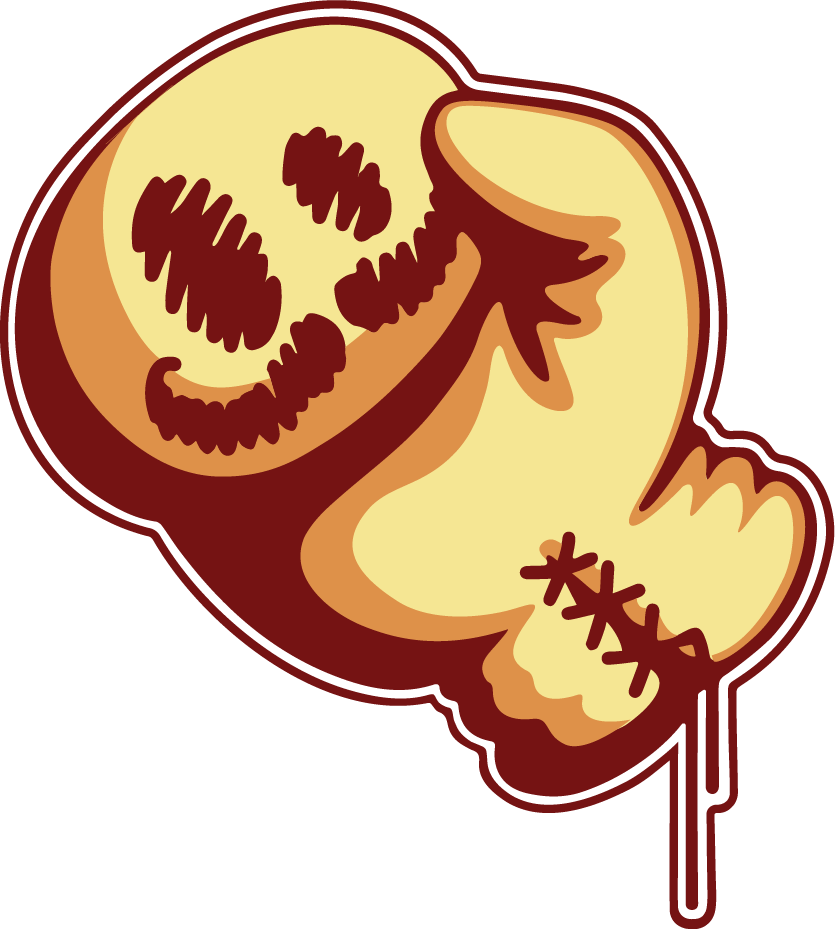Hello residents of Scoville! Today, I thought I’d take some time to get into how Doomsday Peppers works. The nuts & bolts. The gears. Knowing about the game’s theme as you do (see prior blog entries), you may like a peek under the hood to see how that story plays out on a practical level.
This is a big one, folks. Grab some coffee and get comfy.
First, let me say, unless otherwise noted, the names and any quoted descriptions of game mechanisms featured here come from “Building Blocks of Game Design”, by Geoffrey Engelstein & Isaac Shalev (2nd Ed, CRC Press, 2022). The reason I’m leaning so hard on this book is basically because I cannot describe the mechanisms better than they already have. This isn’t a paid endorsement, but I consider this book an indispensable part of any game designer’s library.

The main mechanics you’ll find in Doomsday Peppers include:
Traitor Game Structure
A traitor game can be seen as a kind of team game or as a cooperative game with a betrayal mechanism. The traitors typically win by triggering a failure condition for the players…
-“Building Blocks of Tabletop Game Design”
If you’re read my recent entries, you already know that DdP is a traitor game. One of the players (who all sit down to the table as suburban neighbors) eventually succumbs to the power of the Doomsday Peppers, and turns on their fellow players. After that, it’s a “one vs. many” game, in which the remaining neighbors try to finish their objective before the traitorous Cultist completes their own. Speaking of the objectives, that brings me to the “Race” and “Completing Targets” win states.
Race & Completing Targets (a combination)
Race: The winner is the first player to reach the end of a track.
Completing Targets: The game ends after a set number of targets or goals are completed.
-“Building Blocks of Tabletop Game Design”
The two win states for the game, one for the Cultist and one for the Neighbors, fall into these two categories. If you recall the tour of DdP’s game board (blog entry 3), you’ll remember there’s a track on there called the “Corruptionometer®.” This serves not only as a timer counting down to when a player turns on their neighbors (“the corrupting”), but once that happens, it becomes arguably MORE important.
After the corrupting, the neighbors have to defeat the end-game challenges of “the harvests” before the Corruptionometer® reaches THE END, or they lose the game.
The cultist, on the other hand, has to actively make the marker on the Corruptionometer® move, not just wait it out. They do this by either stealing peppers from their neighbors, or by turning the neighbor’s seeds into peppers. Either action move the marker further along the Corruptionometer®, and if the cultist can move that marker all the way to THE END before the neighbors defeat the harvests, the cultist wins (thus the “Race” mechanism).
Set Collection (A small variation)
…The value or power of the set is greater than the sum of its parts.
-“Building Blocks of Tabletop Game Design”
Wait, “…defeat the end-game challenges of “the harvests”???”
What? How? …Huh?
I understand, there was a lot in that last section. Let’s break some of that down. The “harvests” are challenges that come out at the corrupting. They may change how a certain mechanic works, impose limits, or add mandatory actions players have to do. Oh, and the cultist is immune to them, so only the neighbors have to worry about them.
In order to win, the neighbors have to make all the harvests go away. To do that, they must find and use “artifacts.” Each harvest has a symbol on them that tells players what artifact they need to defeat that harvest. Matching symbols are shown on some of Equipment cards, but here’s the thing… only half of an artifact is shown on any one Equipment card. That’s where set collection comes in. The players have to find two matching halves to make an artifact useable. Once a neighbor manages to do that, they can end the harvest currently in play.
Market (economy)
Players may buy from or sell resources to Markets, where prices and quantities can vary.
-“Building Blocks of Tabletop Game Design”
From previous mentions of “the Stores” and “trading seeds for Equipment cards”, you’ve probably gathered that there is an economic system in Doomsday Peppers, albeit a relatively simple one. The whole point of the game’s economy is to trade for equipment.
Equipment is important to both the neighbors and the cultist. Some Equipment cards have special abilities in the form of a spell torn from the cultists. Any player can use these spells to help their cause. Every Equipment card has a strength printed on it, and that strength is used to attack (the cultist), or to defend (neighbors). Not only that, but as said earlier, the Relics are on those Equipment cards! The cultist, being banned from the neighborhood stores, steals equipment on their turn as an optional action. In order for neighbors to get those cards in their hands, they trade seeds for them. The price of each card is marked on the board, and decreases the longer a card stays in the Stores, until it reaches the far right. The equipment in that slot is free.
Progressive Turn Order
One player has the First Player token. At the end of the round, the token passes to the player to the left who becomes the new First Player for that round. During the round,
players take turns clockwise around the table.
-“Building Blocks of Tabletop Game Design”
This one is self-explanatory from the quote above. The reason we decided to go with this turn order is to encourage a feeling of chaotic unpredictability, while still making it easy for players to follow the turn order without confusing everyone. It may end up giving the cultist a leg up when they need it, or it might save the neighbors from certain destruction. The end of the world should be a little unpredictable.
High Number (for attack resolution)
Each player is represented by a numeric “strength,” and the higher strength wins the conflict.
-“Building Blocks of Tabletop Game Design”
Again, this one’s pretty straightforward. We’ve all probably played a game that featured this mechanism, so it’ll be a familiar one.
The cultist cant trade for equipment at the stores. Why would the neighbors allow them to?? Instead, when a neighbor has a card that the cultist wants <cough-relic-ahem>, or if they just want to steal a pepper from an innocent neighbor, they attack!
To resolve the attack, the two involved players simply place a card from their hand face down in front of them, then turn them over simultaneously. High card wins the fight; it’s that simple. If the cultist is the winner, they can steal an Equipment card, seeds, or a Doomsday Pepper. Why would they want seeds, you ask? Well, to mutate them into peppers, of course!
Once-Per-Game Abilities
Players have a special ability that they can use one time per game.
-“Building Blocks of Tabletop Game Design”
That sneaky cultist has one more trick up their sleeve.
When they get corrupted, the player gets a special deck of spells, called the Cultist’s Spell Book. These stay face up in front of the cultist, and can be used at will on their turn. In order to use the spells, the cultist uses Doomsday Peppers (of course!). The pages of this spell book (cards) get progressively more powerful, but cost more and more peppers. Therefore, the more peppers the cultist gets their corrupted mitts on, the more powerful spells they can cast! There you have it. These mechanisms have shifted and changed over the game’s development (at one point, the cultist was assigned at the beginning, and was a hidden role!), but these have been working well in their current iteration. I hope I explained them well, and I hope it piques your interest in Doomsday Peppers. If you have any questions or favorite mechanisms you’d like to mention, post ‘em below!

